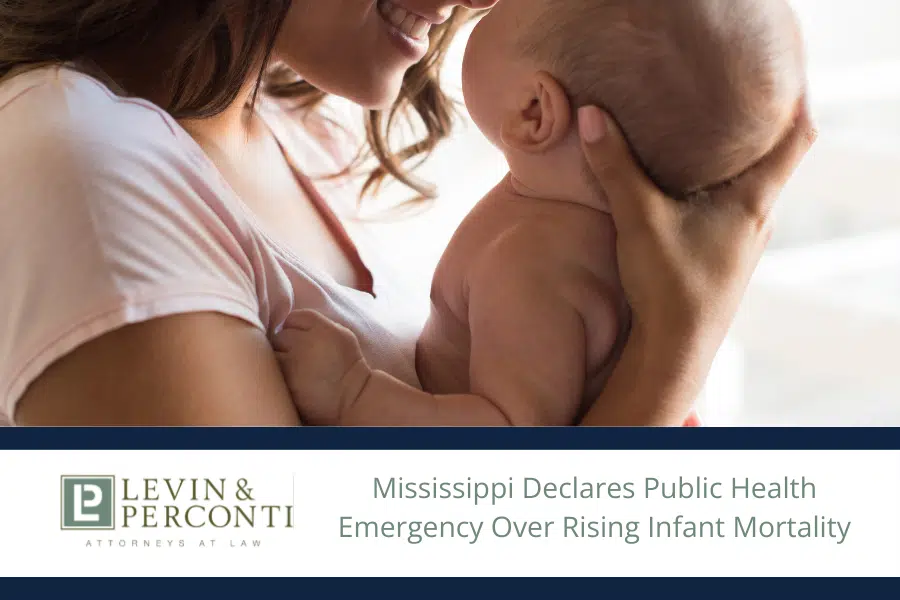
Content Reviewed by:
Dov Apfel
Content Reviewed by: Dov Apfel
Accordion Content
Since 1979, Dov Apfel has been passionate about advocating for birth injury and medical malpractice victims. Mr. Apfel’s career-long record of achievements in birth injury litigation, education, and advocacy has been recognized by the Executive Board of the Birth Trauma Litigation Group of the American Association for Justice. His expertise is demonstrated by his numerous awards, presentations on birth injury topics at legal conferences for organizations like the AAJ and ATLA, and articles published by Trial Magazine and many others.
12 Quick Facts That Could Support Your Birth Injury Lawsuit
According to the American Academy of Pediatrics, most birth injuries are avoidable when risks have been identified, preventative steps are made to reduce complications, and appropriate care has been provided. And while some minor injuries to a fetus and newborn may occur and can resolve without treatment, a birth injury is better defined as the structural destruction or functional deterioration of an infant’s body due to a traumatic event at birth.
Unfortunately, many birth injuries lead to a child’s pain and discomfort resulting from a long-term disability. Parents must act quickly if they would like to receive compensation for these injuries and damages. If considering a lawsuit, know that these facts, and many others, could support each unique case.
- Several medical professionals may be held responsible for identifying at-risk pregnancies and found negligent in failing to provide the duty of care to both a mother and her child. These parties might include doctors and hospitals, nurses, anesthesiologists, and pharmaceutical and medical device companies.
- Racial disparities and obstetric violence are most prevalent among Black and Latina mothers. Hospitals and the civil justice system too often treat reports of obstetric abuse or violence as either a medical error or an interpersonal conflict between OB-GYN and patient, making the specific accounts challenging to track and measure. And obstetric abuse is now considered a violation of human rights, as the United Nations addressed the growing issue in a 2019 special report.
- Preventative tests and procedures should also be a proactive measure used to support monitoring a mother’s health and check the fetus’ position in the weeks and days before labor to help prevent birth trauma and injuries.
- A doctor might be responsible for the injury if they failed to identify and adequately treat the signs of challenging labor and delivery. For example, failure to perform an emergency cesarean section (c-section) can result in a severe birth injury to a newborn, including brain damage due to oxygen deprivation and lifelong injuries to the mother.
- Cerebral palsy is the most common type of birth injury diagnosed, with about 4 out of every 1000 babies born suffering from the condition. Cerebral palsy can be the result of a doctor’s mistake or abnormal development during or after pregnancy. It can be caused by infection, fetal or pediatric stroke, undiagnosed maternal health problems, premature birth, and asphyxia – allowing brain damage to occur before, during, or after childbirth.
- There is an established medical standard that reasonable medical providers use to indicate when a C-section and emergency actions need to be performed during labor and delivery.
- Inadequate oxygen levels can decrease a newborn’s blood pressure, heart rate, and blood flow away from the heart, limiting the blood flow to vital organs and tissue. When this happens, irreversible neurological or cellular damage can occur.
- Using forceps or a vacuum to force a fetus down from high in the birth canal is associated with a high risk of causing a birth injury. Forceps used to assist the delivery can also cause severe facial nerve injuries and noticeable when the newborn cries and the face appears lopsided. The National Institute of Health defines cephalohematoma as “an accumulation of blood under the scalp” and occurs during the birth process when “small blood vessels on the head of the fetus are broken as a result of minor trauma.” A cephalohematoma-related injury is more likely to occur when a physician improperly or ineffectively uses birth-assisting tools during delivery rather than other measures.
- A transverse delivery position is likely the most common reason a spinal cord injury to an infant may occur during labor. Traction on the baby’s trunk or twisting the trunk can stress the spinal cord and cause injury.
- Ultrasounds should also be a proactive measure used to support monitoring a mother’s health or to check the fetus’ position in the weeks and days before labor to help prevent birth trauma and injuries.
- Shoulder dystocia complications are more often foreseen, allowing healthcare providers to perform interventions to prevent this type of birth injury from happening in the first place.
- A mother and her baby can be at harm throughout the pregnancy, during labor and delivery, and throughout the post-partum stage. Around one-third of U.S. pregnancy-related deaths, counted up to one-year post-birth, occur during pregnancy.
It is a normal feeling for you to question if your infant’s injuries could have been prevented with more reasonable, effective, and immediate medical care. Using facts similar to those outlined above, law firms experienced in birth injury litigation can do the work for you. We will help identify the evidence needed to prove that a medical professional did not do all they could to keep you or your child safe.
Moving Ahead with a Birth Injury Lawsuit Can Be More Manageable with Experienced Legal Support
The costs to diagnose and treat birth injuries can be astronomical, and many expenses and hardships may not be covered by health insurance. Additionally, the child or mother may need to have extended treatment or even lifelong care. For these reasons, it is necessary to seek legal guidance quickly and as soon as your family is ready to ask for the help you deserve. Because the claim is considered civil, a specific birth injury statute of limitations is deemed applicable to these sensitive cases.
Learn How a Birth Injury Attorney Can Help Your Family
The nationally renowned birth injury attorneys at Levin & Perconti have taken on every role in life and are uniquely positioned to understand parental worries and sensitive needs. You can rely on us to investigate your medical treatment, settle disputes, and get answers. We can earn you compensation for economic losses, physical and emotional damage to your quality of life, and even the lost life of a child. When you are ready, please do not hesitate to call us at 312-332-2872 or toll-free at 877-374-1417.



